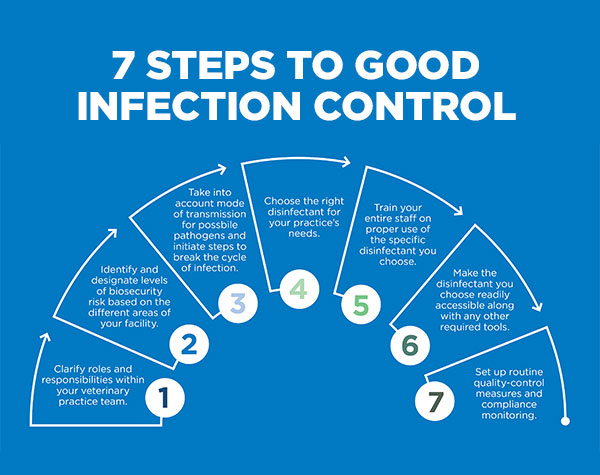Infection Control
How Infections Spread
Germs are a part of everyday life and are found in our air, soil, water, and in and on our bodies. Some germs are helpful, others are harmful. Many germs live in and on our bodies without causing harm and some even help us to stay healthy. Only a small portion of germs are known to cause infection.
How Do Infections Occur?
An infection occurs when germs enter the body, increase in number, and cause a reaction of the body.
Three things are necessary for an infection to occur:
- Source: Places where infectious agents (germs) live (e.g., sinks, surfaces, human skin)
- Susceptible Person with a way for germs to enter the body
- Transmission: a way germs are moved to the susceptible person
Click on a tab below to learn more.
- Source
- Susceptible Person
- Transmission
Source
A Source is an infectious agent or germ and refers to a virus, bacteria, or other microbe.
In healthcare settings, germs are found in many places. People are one source of germs including:
- Patients
- Healthcare workers
- Visitors and household members
People can be sick with symptoms of an infection or colonized with germs (not have symptoms of an infection but able to pass the germs to others).
Germs are also found in the healthcare environment. Examples of environmental sources of germs include:
- Dry surfaces in patient care areas (e.g., bed rails, medical equipment, countertops, and tables)
- Wet surfaces, moist environments, and biofilms (e.g., cooling towers, faucets and sinks, and equipment such as ventilators)
- Indwelling medical devices (e.g., catheters and IV lines)
- Dust or decaying debris (e.g., construction dust or wet materials from water leaks)
Susceptible Person
A susceptible person is someone who is not vaccinated or otherwise immune, or a person with a weakened immune system who has a way for the germs to enter the body. For an infection to occur, germs must enter a susceptible person’s body and invade tissues, multiply, and cause a reaction.
Devices like IV catheters and surgical incisions can provide an entryway, whereas a healthy immune system helps fight infection.
When patients are sick and receive medical treatment in healthcare facilities, the following factors can increase their susceptibility to infection.
- Patients in healthcare who have underlying medical conditions such as diabetes, cancer, and organ transplantation are at increased risk for infection because often these illnesses decrease the immune system’s ability to fight infection.
- Certain medications used to treat medical conditions, such as antibiotics, steroids, and certain cancer fighting medications increase the risk of some types of infections.
- Lifesaving medical treatments and procedures used in healthcare such as urinary catheters, tubes, and surgery increase the risk of infection by providing additional ways that germs can enter the body.
Recognizing the factors that increase patients’ susceptibility to infection allows providers to recognize risks and perform basic infection prevention measures to prevent infection from occurring.
Transmission
Transmission refers to the way germs are moved to the susceptible person.
Germs don’t move themselves. Germs depend on people, the environment, and/or medical equipment to move in healthcare settings.
There are a few general ways that germs travel in healthcare settings – through contact (i.e., touching), sprays and splashes, inhalation, and sharps injuries (i.e., when someone is accidentally stuck with a used needle or sharp instrument).
- Contact moves germs by touch (example: MRSA or VRE). For example, healthcare provider hands become contaminated by touching germs present on medical equipment or high touch surfaces and then carry the germs on their hands and spread to a susceptible person when proper hand hygiene is not performed before touching the susceptible person.
- Sprays and splashes occur when an infected person coughs or sneezes, creating droplets which carry germs short distances (within approximately 6 feet). These germs can land on a susceptible person’s eyes, nose, or mouth and can cause infection (example: pertussis or meningitis).
- Close range inhalation occurs when a droplet containing germs is small enough to breathe in but not durable over distance.
- Inhalation occurs when germs are aerosolized in tiny particles that survive on air currents over great distances and time and reach a susceptible person. Airborne transmission can occur when infected patients cough, talk, or sneeze germs into the air (example: TB or measles), or when germs are aerosolized by medical equipment or by dust from a construction zone (example: Nontuberculous mycobacteria or aspergillus).
- Sharps injuries can lead to infections (example: HIV, HBV, HCV) when bloodborne pathogens enter a person through a skin puncture by a used needle or sharp instrument.


